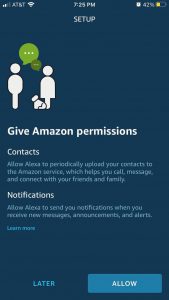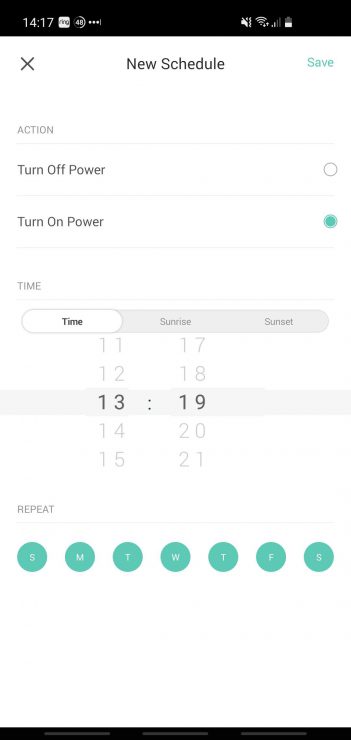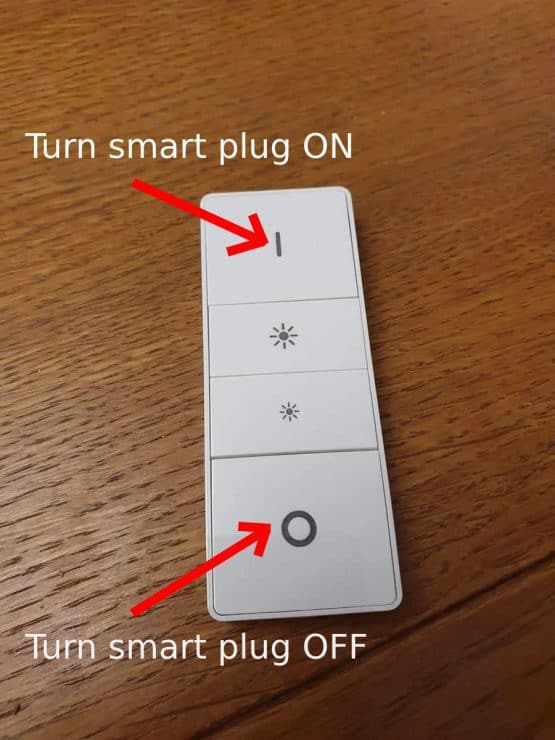The Amazon smart plug is a great way to transform your pre-smart home technology into something a little more state of the art. You can use these plugs to bring your old lighting, electrical appliances, and most other eclectic devices into the smart home fold.
One of the biggest challenges with transforming everything into smart technology is the issues of users. The problem of “who gets to control which device and when” takes on a new meaning when you need a smartphone and an account login to make changes.
The Amazon smart plug does not work with many users—at least not without a little creativity. Alexa devices and Echo devices both do not recognize Amazon Smart Plugs that are not registered to their respective accounts. Thankfully, there are several workarounds that can solve the multiple user problem including sharing accounts, adding physical remotes, or making clever use of routines.
An Introduction to the Amazon Smart Plug
The smart plug is the Swiss Army Knife of smart home technology. Want to give basic smart technology powers to your old-timey coffee maker, desk lamp, or basically any other electronic device? Then all you need is a smart plug.
The smart plug works with the rest of Amazon’s smart home technology and in similar ways. You can use Alexa and Echo devices to control the smart plug with voice command and create routines with the plug. However, there is a small catch to all this goodness.
The smart plug has a few issues when it comes to working at peak performance in a multiple user environment.
The Multiple Accounts Problem With Alexa
Here’s the main problem with multiple users and some of Amazon’s smart technology: devices registered to Account A can’t be controlled, or even detected, by Account B.
This means that roommates, partners, and coworkers who need to control the same devices will all need to have the same Amazon accounts.
This could be a huge problem for most of us. Sharing your Amazon account means giving over access to potentially sensitive personal and financial information. In some cases this might not be an issue at all, but in others it’s a flat our deal breaker.
There’s another issue regarding how Amazon approaches multiple users. It’s there Echo devices.
Registering Echo Devices and Multiple Users

Here’s how the flip side of this problem works. An Echo device registered to Account A can only see devices also registered to Account A. Even if that Echo is sitting right next to Account B’s smart plug, it won’t be able to see a thing.
This means your verbal commands sent to an Echo device might not be able to interact with a nearby smart plug. It all comes down to which devices are registered to which accounts. This is even more important than physical range and distance between devices.
There seems to be a pretty large issue with multiple user environments and some of Amazon’s smart technology, but are there ways to get around these limitations? Well yes… sort of.
How to Work Around Multiple Users and Amazon Smart Plugs
So, the Amazon Smart Plug and its related ecosystem struggles a little in multiple user environments. Does this mean scrapping the smart plug and calling it a day? Of course not! Where’s the fun in smart technology without a little DIY elbow grease and troubleshooting?
Let’s take a look at a few workarounds for multiple users sharing an smart plug.

This is the first way around our multiple user problem. If the problem is too many users, just get rid of all of the extra accounts.
While this is Occam’s razor getting us down to the quickest solution for our problem, it also has some dramatic swings when it comes to how practical it is.
Yes, if your roommates are cool with everyone having the keys to the same account, this solves the problem pretty quickly. It also raises concerns about privacy, responsibility, and access that might not work out for everyone. Sharing control over common areas is a great idea, but if that means also sharing control over the smart tech in private rooms, it might be a bridge too far.
Even partners living together might find the idea of sharing Amazon accounts to be a bigger step than moving in was!
Luckily, there are less invasive, but perhaps more involved, workarounds for this issue.
Use Routines and Schedules to Your Advantage
Let’s say the outlet that multiple people need to use is connected to lights in a common area. One solution is to use schedules, routines, or other smart tech planning features to create a schedule that works for everyone. Maybe the lights pop on in the morning for the early birds and then dim down at sunset for a relaxing mood:

This could solve the shared user problem without ever having to share passwords.
One problem with this strategy is that changing things on the fly gets even harder. If the owner of the account is away on vacation or at work it might be nearly impossible to make good use of the smart plugs in question.
Another way we can tackle this problem is by reworking our smart home from the ground up.
Change Up How Your Smart Home Functions
One of the most common causes for the multiple user problem is an Amazon Smart Plug that is located in a common area. Whether it’s a shared bedroom, hallways, or a living room, these areas can become tricky when it comes to sharing control with everyone who needs it.
A quick way to solve this problem is just to adjust how your smart home works for you. That’s the point of smart home technology, after all. We use these gadgets to improve our quality of life and give us easier and greater control over our homes. Changing which fixtures are connected to smart plugs, which rooms have them, and how users are divided amongst common devices can remove the problems caused by user restrictions just as easily as anything else.
We can also get around this issue by switching brands.
Try Smart Plug Brands With Physical Remotes
Amazon may be one of the kings of the ring when it comes to smart technology, but whether or not it’s the best is up for debate.
The Amazon Smart Plug lacks a physical remote option which dramatically limits its usability. The Hue and Innr smart plugs have options for physical remotes:

How does this help our multiple user issues?
Well, it essentially takes the user out of the equation. With a physical remote, you don’t need access to the user’s account to handle basic functions. Sure, you won’t be able to orchestrate a complicated routine with these remotes, but you will be able to turn things on and off without messing around with accounts and passwords.
The tradeoff here is pretty obvious. This would require replacing smart plugs and trying out a new brand which might be more trouble, and expense, than it’s worth. It all comes down to what you need from your smart home.
There is a secret trick that comes built into all smart technology that you’re about to learn all about…
Go Truly Old School
When in doubt, talk it out.
If none of these solutions work for all of the users who need to stay on top of this Amazon smart plug, then you can always talk with everyone about the smart plug and ways it could be used to everyone’s benefit. This solution also opens up other possibilities such as figuring out better ways to utilize your smart home technology to everyone’s benefit rather than just a lone user.
A quick chat with partners or roommates might just be the fastest way to solve the puzzles caused by an Amazon smart plug being located in a common area.
Technically speaking, verbal communication is a kind of wireless connectivity feature, after all.

Another option is not to use an Amazon smart plug and instead use a smartlife or a different brand plug. Then one user creates an account for the smartlife plug and then adds it to their own Alexa account as a skill using their smartlife account login details. The second use does the same using the same smartlife login details. There may also be the option for the first user to allow a second user with a separate smartlife account to have access to their smartlife device, but this means setting up two smartlife account which is not really needed if the first user only intends on using their smartlife account the for the device(s) in question.
Thanks Kris, that’s a really good point. Yes, using a different brand smart plug is a neat work around actually.